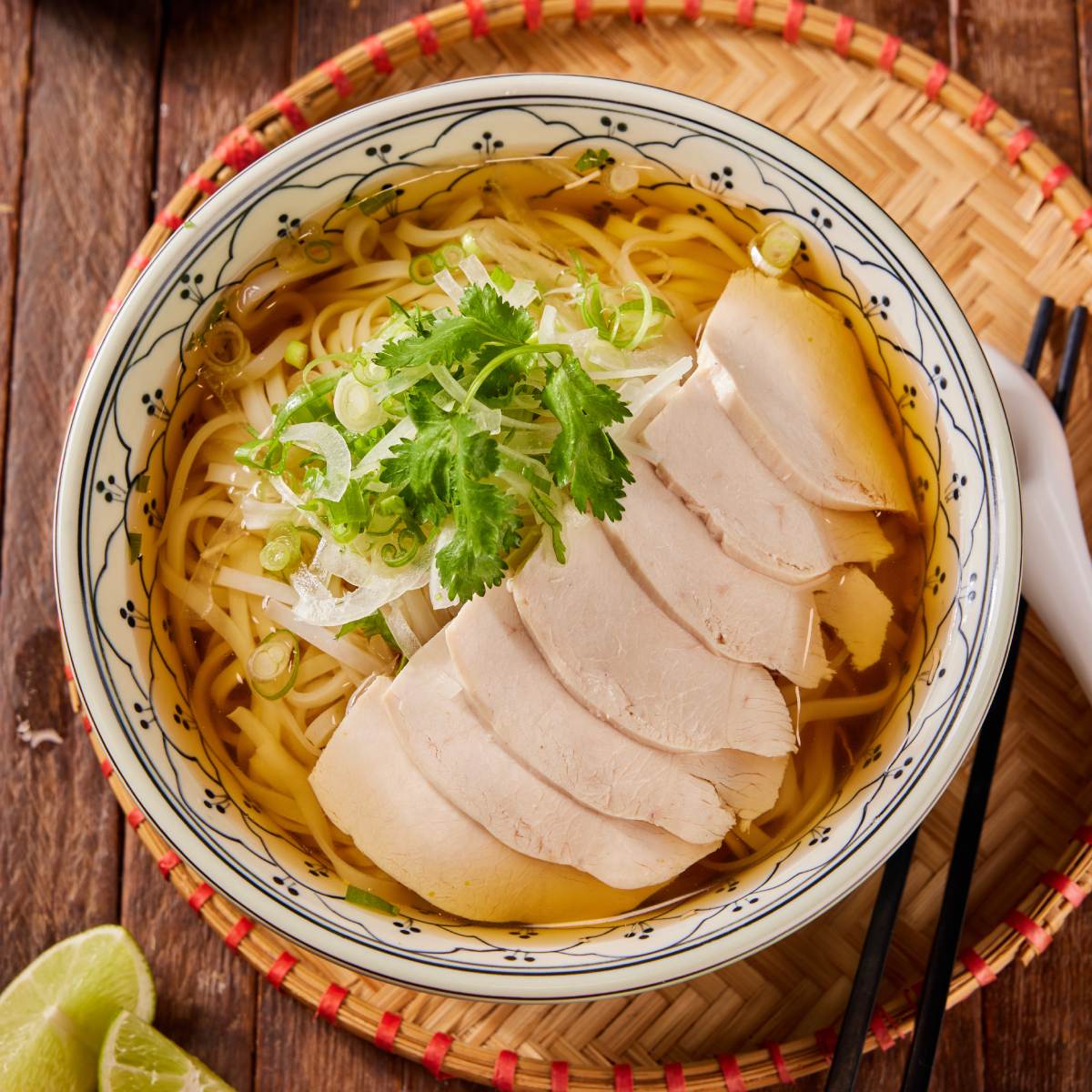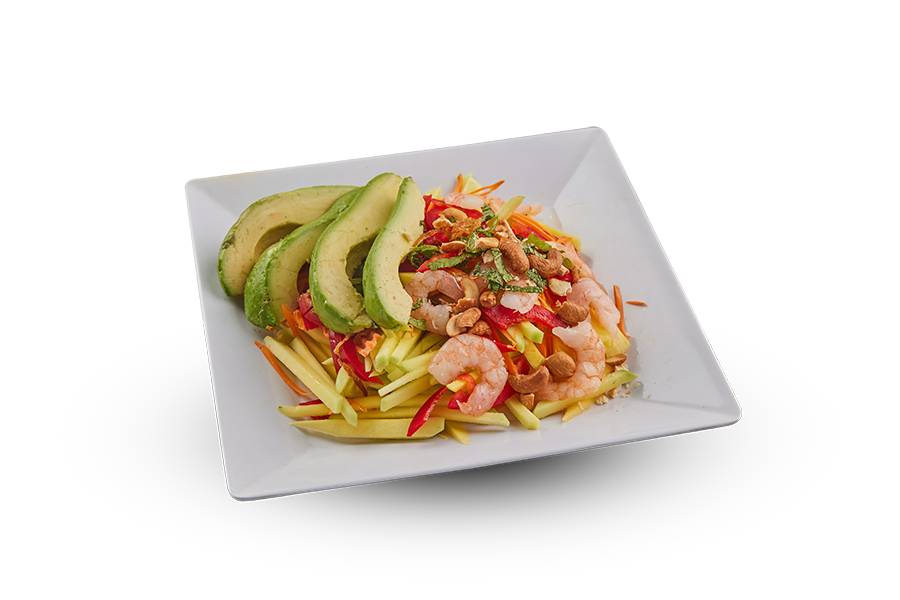Ingredients You Will Need
Before diving into the cooking process, gathering all the necessary ingredients is important. Here's what you'll need:
Egg Noodles: 200 grams of fresh egg noodles. If you prefer a vegan option, you can substitute it with vegan-friendly noodles.
Tofu: 200 grams of firm tofu, drained and pressed to remove excess moisture.
Vegetables: A variety of vegetables can be used. Common choices include:
Carrots: 1 medium carrot, julienned.
Bell Peppers: 1 red or yellow bell pepper, sliced.
Bok Choy: 2-3 small bok choy, chopped.
Broccoli: 1 small head, cut into florets.
Snow Peas: 100 grams, trimmed.
Onions: 1 small onion, sliced.
Garlic: 3-4 cloves, minced.
Soy Sauce: 2-3 tablespoons, depending on your taste preference.
Oyster Sauce (Vegetarian): 1 tablespoon. If vegan, you can use a mushroom-based oyster sauce.
Sesame Oil: 1 tablespoon for a rich, nutty flavour.
Vegetable Oil: 2-3 tablespoons for stir-frying.
Salt and Pepper: To taste.
Garnishes: Optional garnishes include chopped green onions, sesame seeds, and a squeeze of lime.
Preparing the Ingredients
Prepare the Tofu: Cut the tofu into small cubes or rectangles. The size of the pieces can vary depending on your preference, but more petite pieces will absorb more flavour. Once cut, lightly season the tofu with a pinch of salt and set aside.
Vegetable Preparation:
Carrots: Peel and julienne the carrot into thin matchsticks.
Bell Peppers: Slice the bell pepper into thin strips.
Bok Choy: Wash and chop the bok choy into bite-sized pieces.
Broccoli: Cut the broccoli into small florets. You can also peel and slice the stems if you like.
Snow Peas: Trim the ends and remove any strings if present.
Onions: Slice the onion thinly.
Noodles: If you use fresh egg noodles, they may already be soft. If using dried noodles, cook them according to the package instructions until they are just al dente. Be careful not to overcook them as they will cook further during stir-frying. Drain the noodles and toss them with some vegetable oil to prevent sticking.

Cooking the Tofu
Heating the Pan: Heat 1-2 tablespoons of vegetable oil in a non-stick pan or wok over medium heat.
Frying the Tofu: Add the pieces to the hot oil and fry them until they are golden brown on all sides. This usually takes about 5-7 minutes. Once fried, remove the tofu from the pan and set it aside on a plate lined with paper towels to absorb any excess oil.
Stir-Frying the Vegetables
Garlic: Add more oil if necessary and lower the heat to medium in the same pan or wok. Add the minced garlic and sauté for about 30 seconds until fragrant.
Vegetables: Add the onions first and stir-fry until they become translucent. Then, add the julienned carrots, bell peppers, and broccoli. Stir-fry for 2-3 minutes, allowing the vegetables to soften slightly but retain a crunch.
Bok Choy and Snow Peas: Add the bok choy and snow peas to the mix. Stir-fry for another 2 minutes. You want the vegetables to be vibrant and crisp-tender.
Combining Noodles, Tofu, and Sauce
Adding Noodles: Add the cooked egg noodles to the pan once the vegetables are cooked to your liking. Use tongs or chopsticks to gently toss the noodles with the vegetables.
Sauce: Drizzle the soy sauce, vegetarian oyster sauce, and sesame oil over the noodles and vegetables. Toss everything together, ensuring the noodles are evenly coated with the sauce.
Adding Tofu: Add the fried tofu back into the pan and gently mix it with the noodles and vegetables. Allow everything to cook for another 2-3 minutes so the flavours meld together.
Final Seasoning: Taste the noodles and adjust the seasoning with salt and pepper as needed. You can add a dash of chilli sauce or flakes at this stage if you like a bit of spice.
Serving Mì Xào Chay
Plating: Remove the pan from the heat once everything is cooked and well mixed. Serve the noodles hot in a large serving dish or individual bowls.
Garnishing: Top the noodles with your preferred garnishes. Chopped green onions, sesame seeds, or a squeeze of lime can add a layer of flavour and freshness to the dish.
Suggestions: Mì Xào Chay can be served as a standalone meal or paired with a light soup, such as a simple vegetable broth, to complement the dish.
Tips and Variations
Noodle Types: While egg noodles are traditional, you can experiment with different noodle types, such as rice noodles, udon, or soba, for a different texture and taste.
Protein Variations: If you're not strictly vegetarian, substitute tofu with other proteins such as tempeh, seitan, or stir-fried mushrooms for a meaty texture.
Spice it Up: For those who enjoy spicy food, adding sliced chilli peppers or a spoonful of chilli garlic sauce can give the dish a nice kick.
Nutritional Boost: Additional vegetables like spinach, zucchini, or baby corn can make the dish even more nutritious.
Gluten-Free Option: To make the dish gluten-free, ensure that the soy sauce and oyster sauce you use are gluten-free, and choose gluten-free noodles.
Health Benefits of Mì Xào Chay
Balanced Nutrition: This dish provides a balanced mix of carbohydrates, proteins, and vegetables, making it a wholesome meal. The noodles give you the necessary energy, while tofu offers a good source of plant-based protein.
Rich in Vitamins: The variety of vegetables used in Mì Xào Chay ensures you get a healthy dose of vitamins and minerals, including vitamin C from bell peppers, vitamin A from carrots, and iron from bok choy.
Low in Calories: Compared to other fried noodle dishes, Mì Xào Chay is relatively low in calories, mainly if you use less oil and avoid deep-frying the tofu.
Fiber-Rich: The vegetables and tofu add a good amount of fibre to the dish, which aids in digestion and keeps you feeling full longer.
To Sum Up
Mì Xào Chay is not just a meal; it’s a combine of flavours and textures that come together delightfully. This dish is perfect for anyone looking to enjoy a satisfying, nutritious, and delicious meal. Whether you're a sea chef or a beginner in the kitchen, this recipe is simple enough to follow and adapt to your tastes.
By preparing this dish, you get to enjoy a tasty meal and contribute to a more plant-based diet, which is beneficial for your health and the environment. So, the next time you're following for something comforting and flavorful, try making Mì Xào Chay and experience the joys of Vietnamese cuisine right in your home.
Here are some delicious food and drinks to try when ordering from PHO restaurants in Toronto:
Tofu Pad Thai (Pad Thai Tàu Hủ CHAY)
Chicken Noodle Soup (Phờ Gà CHAY)
Vegetarian Deep Fried Spring Roll (Chả Giò CHAY)
Chicken Fried Rice (Cơm Chiên Gà CHAY)
Vegetarian Salad Roll with Tofu (Gỏi Cuốn CHAY)
Vegetarian Mango Salad with Tofu (Gỏi Xoài CHAY)
Stirred Fried Vegetable with Tofu and Steamed Rice (Cơm Xào Rau Cải CHAY)
Stirred Fried Chicken with Lemongrass and Steamed Rice (Cơm Gà Xào Sả Ớt CHAY)






















